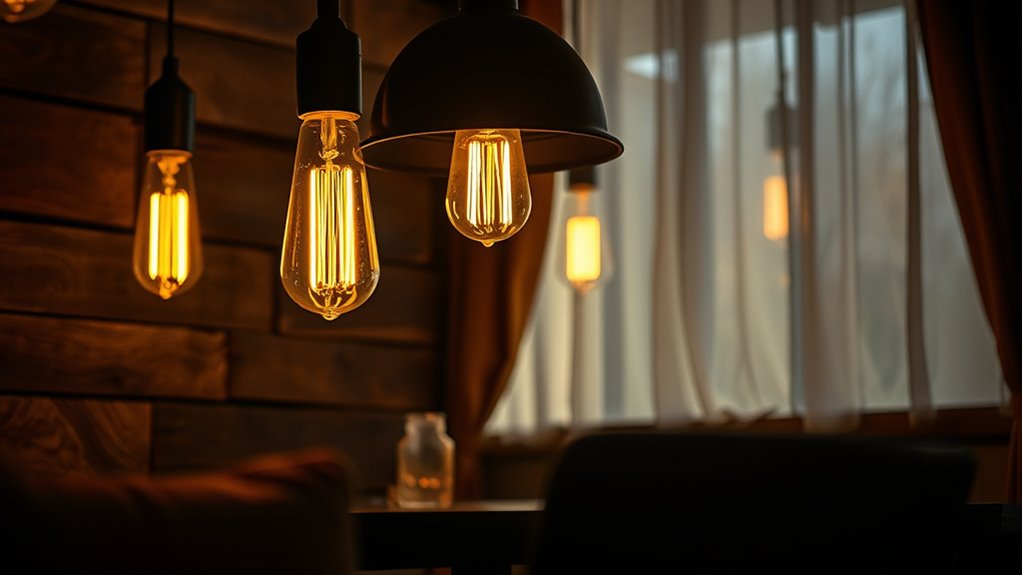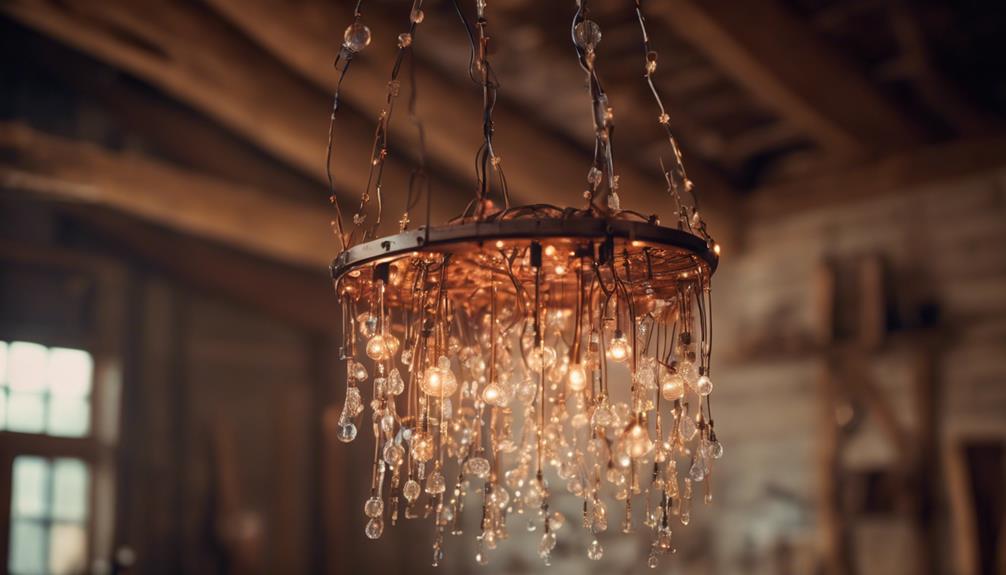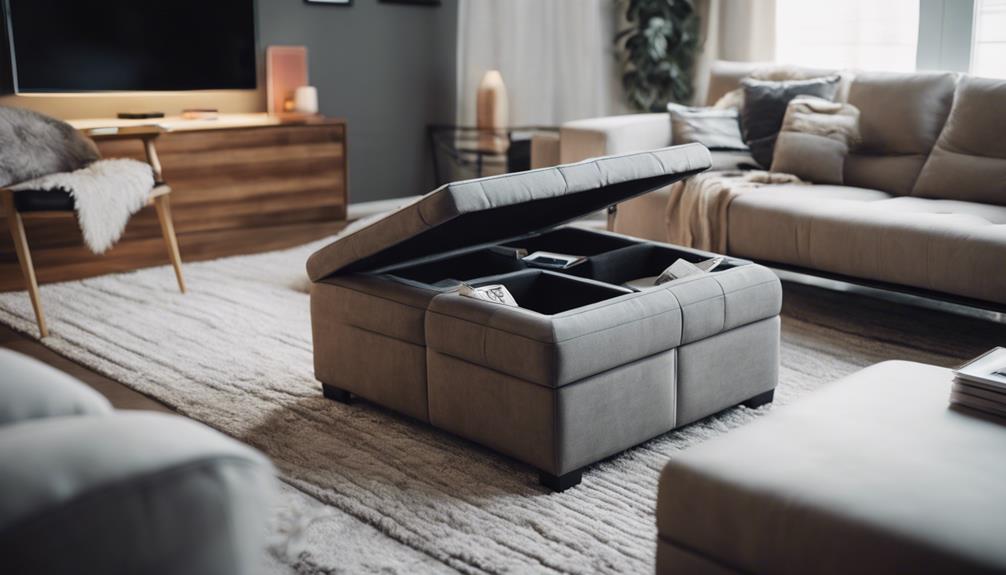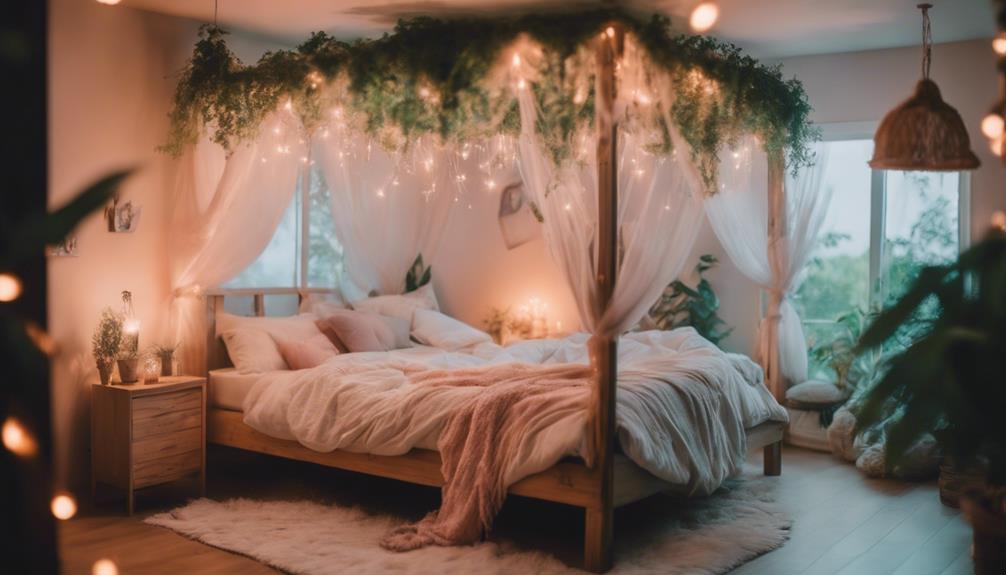To create mood with bulbs and shades, you should carefully consider their placement and color temperature. Position lamps strategically to control shadows and highlights, using high or eye-level placements for different effects. Choose warm bulbs for cozy vibes and cool ones for clarity, blending them thoughtfully for harmony or contrast. Mastering these layers helps you craft the perfect atmosphere, and if you keep exploring, you’ll learn how to elevate your lighting skills even further.
Key Takeaways
- Strategic lamp placement influences scene brightness, shadows, and mood, with high, eye-level, or angled positions creating different effects.
- Color temperature shapes atmosphere; warm bulbs evoke coziness, while cool bulbs mimic daylight for clarity and focus.
- Combining placement and hue allows for layered lighting that adds depth, interest, and emotional resonance.
- Balancing warm and cool lights with thoughtful positioning enhances visual interest and guides viewer focus.
- Experimenting with lamp positions and bulb colors helps pros craft dynamic, mood-driven scenes tailored to storytelling goals.
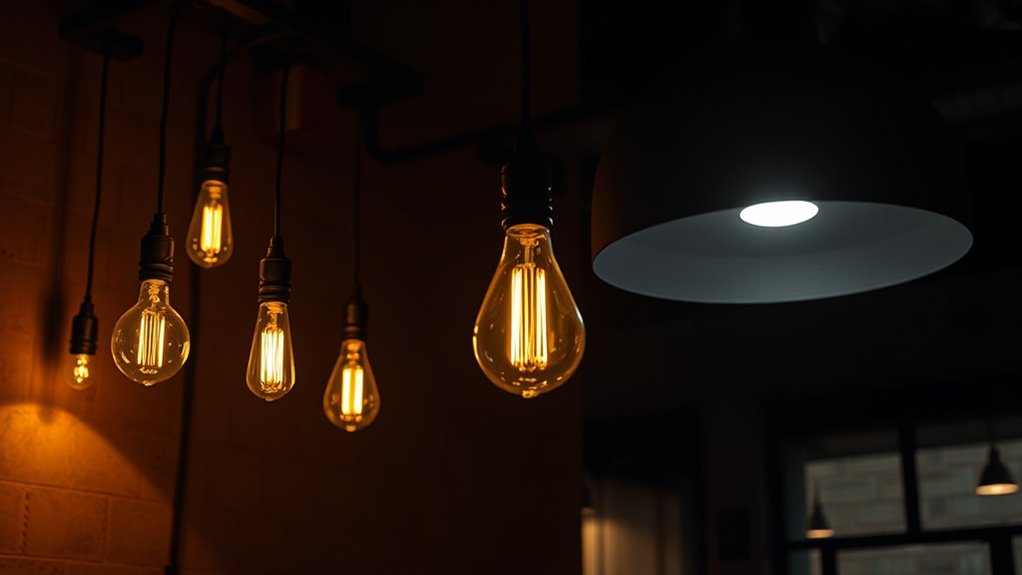
Lighting layers are essential tools for creating visually compelling and well-balanced images. When you’re working on a shot or setting up a space, understanding how to layer your lighting can make all the difference. One of the most important aspects of this process is lamp placement. Where you position your bulbs influences not just the brightness but the mood and depth of your scene. For example, placing a lamp high and pointing downward can mimic natural daylight, creating a sense of openness, while positioning lights at eye level can emphasize details and textures. Consider the angle and distance of each lamp to control shadows and highlights effectively. You want your lighting to feel intentional, guiding the viewer’s eye without overwhelming the scene.
Color temperature also plays a critical role in shaping the atmosphere. The hue of your bulbs can evoke feelings, set time periods, or simply match your aesthetic. Warm tones, around 2700K to 3000K, produce a cozy, inviting glow, perfect for intimate settings or relaxing vibes. Conversely, cooler temperatures, around 5000K to 6500K, mimic daylight and are great for clarity and focus, often used in workspaces or modern environments. When you’re layering lights, paying attention to color temperature helps you balance various sources, preventing clashes or overly sterile looks. Mixing warm and cool lights requires careful planning; you can either harmonize them for a natural transition or create contrast for visual interest.
To get the desired effect, think about how lamp placement and color temperature interact. For instance, if you’re aiming for a warm, inviting scene, place lamps with warm bulbs at strategic points to cast gentle pools of light, then fill in shadows with softer, cooler ambient lighting. If you want a sharp, high-contrast look, use cooler bulbs for key lighting and warm accents to add depth and richness. Adjusting the lamp placement in relation to the subject ensures that shadows fall where you want them, accentuating features or adding mystery. Always keep in mind that the placement of your bulbs influences how color temperatures blend and how the overall mood is perceived.
Mastering lamp placement and color temperature enables you to craft layered lighting that feels natural yet intentionally designed. When you plan your lighting with purpose, you’ll find it easier to evoke the right mood, highlight key details, and create images that resonate emotionally. The key is experimenting—try different positions and color combinations until you achieve the perfect balance that aligns with your vision. With practice, you’ll develop an instinct for how these elements work together, making your lighting setups more dynamic and compelling every time.
Frequently Asked Questions
How Do I Choose the Right Light Bulbs for Different Rooms?
When choosing the right light bulbs for different rooms, consider bulb color and wattage selection to set the mood. For cozy bedrooms, pick warm-colored bulbs with lower wattage for softness. In kitchens or workspaces, opt for brighter, cooler bulbs with higher wattage for clarity. Think about each room’s purpose, and match bulb color and wattage accordingly to create the perfect ambiance and functionality.
What Are the Latest Lighting Technology Trends in Interior Design?
Like a painter with a vibrant palette, you’ll love the latest lighting trends. LED advancements now offer smarter, energy-efficient options that adapt to your mood, while OLED applications create seamless, glowing surfaces that add modern elegance. These innovations let you customize ambiance effortlessly, making your space feel warm and inviting or sleek and sophisticated. Embrace these trends to elevate your interior design with cutting-edge lighting technology.
How Can I Incorporate Smart Lighting Into Layered Lighting Schemes?
You can incorporate smart lighting into layered schemes by choosing fixtures compatible with your smart home system. Use automation integration to control brightness, color, and schedules easily, creating different moods for various occasions. Combine smart bulbs with traditional shades and bulbs to add flexibility. This way, you enhance ambiance and functionality, all while enjoying seamless control through your smartphone or voice commands, making your space both smarter and more inviting.
What Are Common Mistakes to Avoid When Layering Lights?
Ever wonder why your layered lighting feels off? You might be making mistakes like choosing the wrong bulb types, which can ruin the mood. Always consider shadow management—poor placement causes harsh shadows and uneven lighting. Avoid over-lighting or under-lighting spaces, and don’t forget to coordinate your bulbs for a balanced glow. Proper planning guarantees your layers work harmoniously, creating inviting, functional spaces without visual chaos.
How Do Lighting Layers Affect Energy Efficiency and Sustainability?
Lighting layers impact energy consumption and sustainability because they allow you to use different light intensities and types strategically. By layering eco-friendly lighting options, you can reduce overall power use while maintaining a comfortable atmosphere. When you choose energy-efficient bulbs and adjust layers based on need, you optimize your space’s lighting, lowering energy costs and supporting eco-conscious living without sacrificing style or function.
Conclusion
Now you’re practically a lighting wizard, wielding bulbs and shades like a master magician! With these layers, you can turn any room from dull to dazzling in seconds—like flipping a switch makes the sun rise or the stars sparkle. So go ahead, experiment, and don’t be afraid to shine brighter than a supernova. Your space will be so perfectly lit, even the sun will be jealous of your glow!
